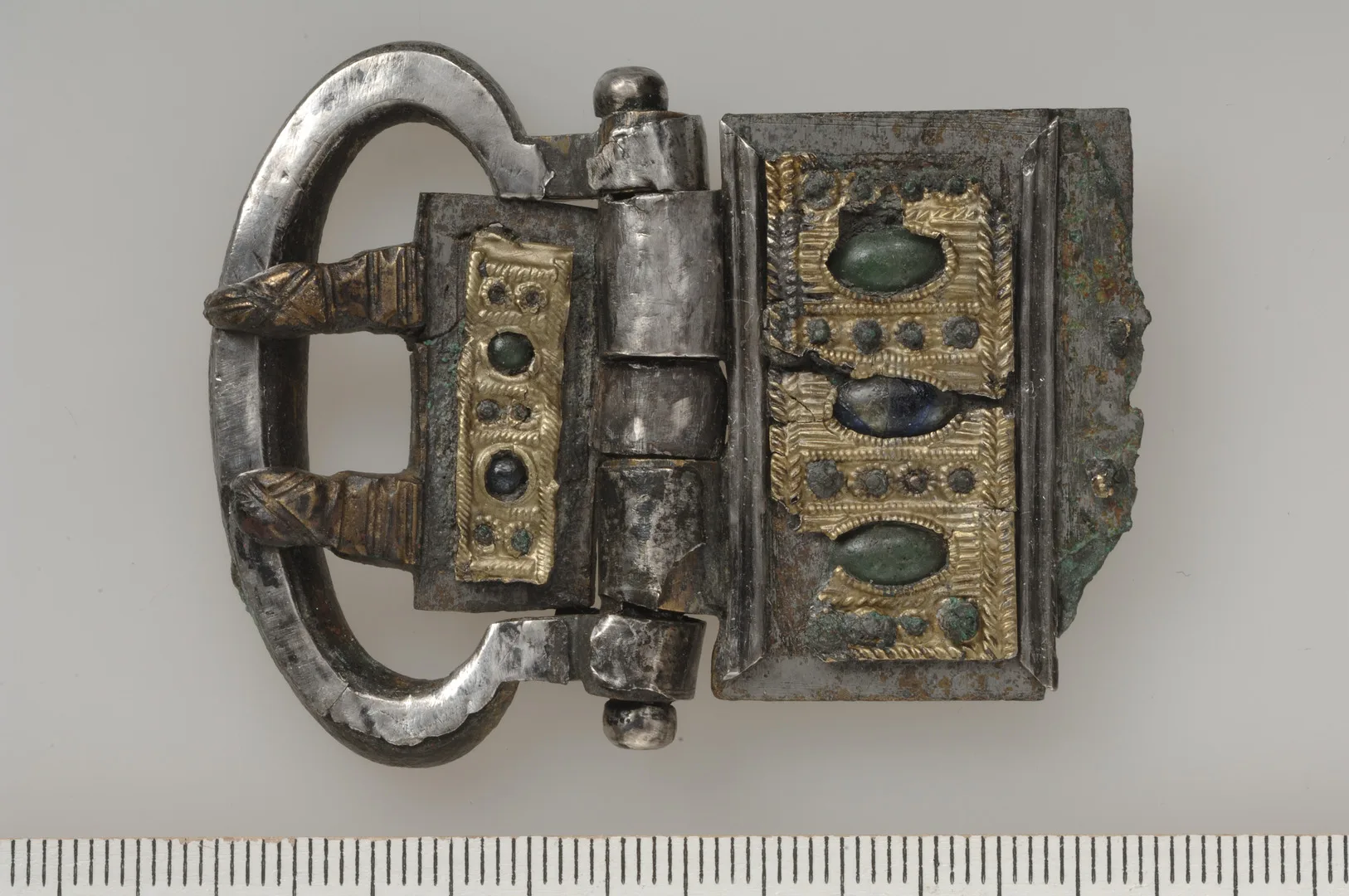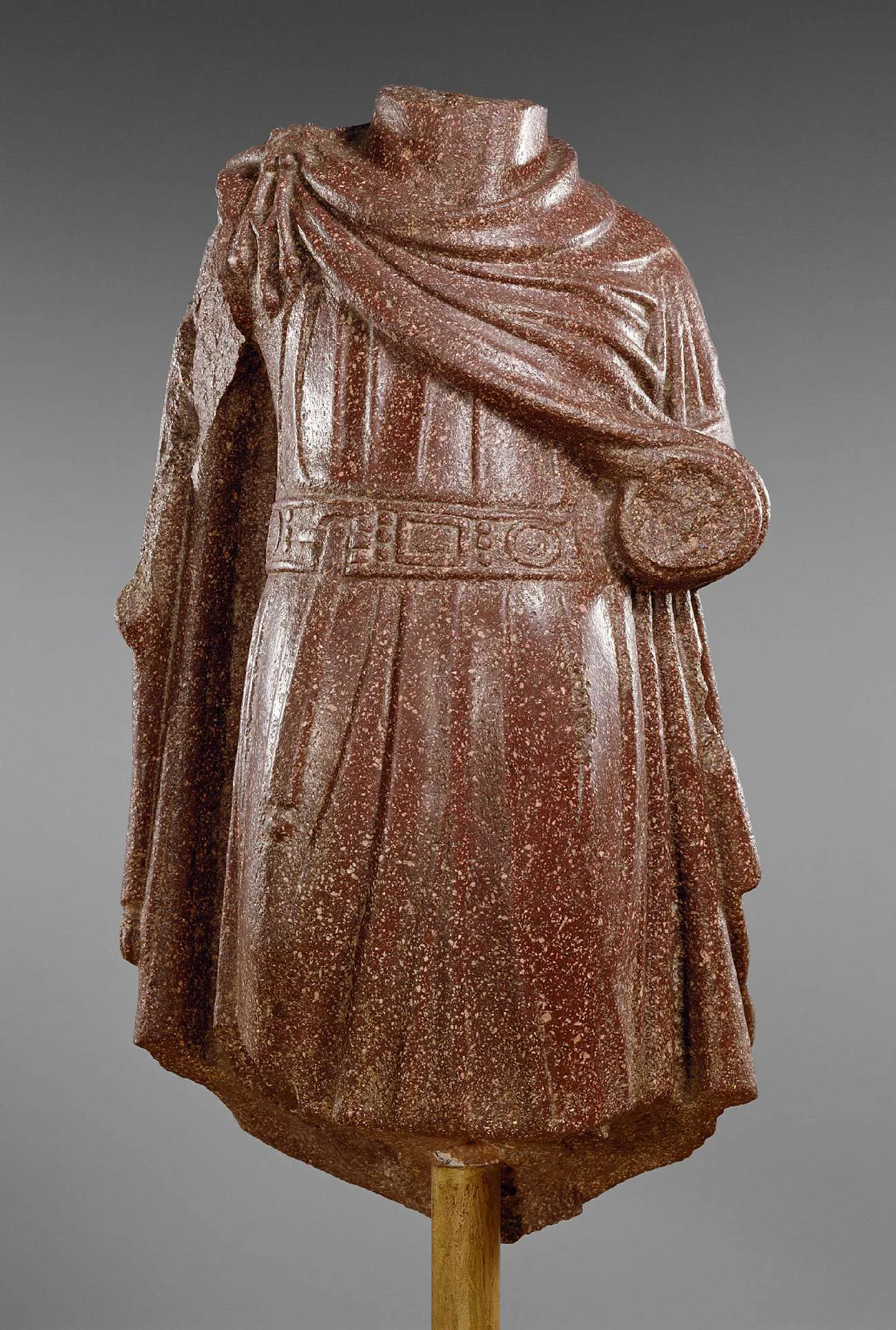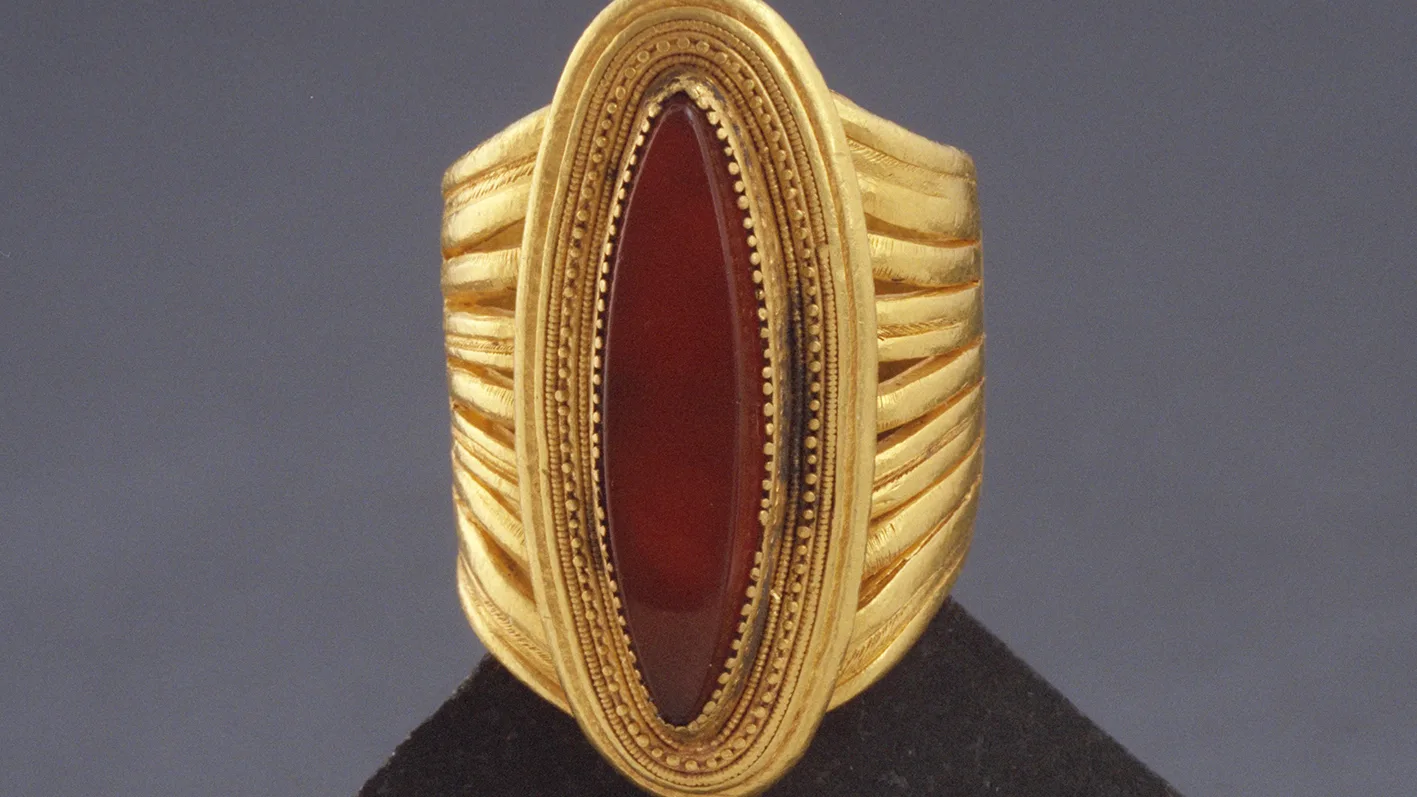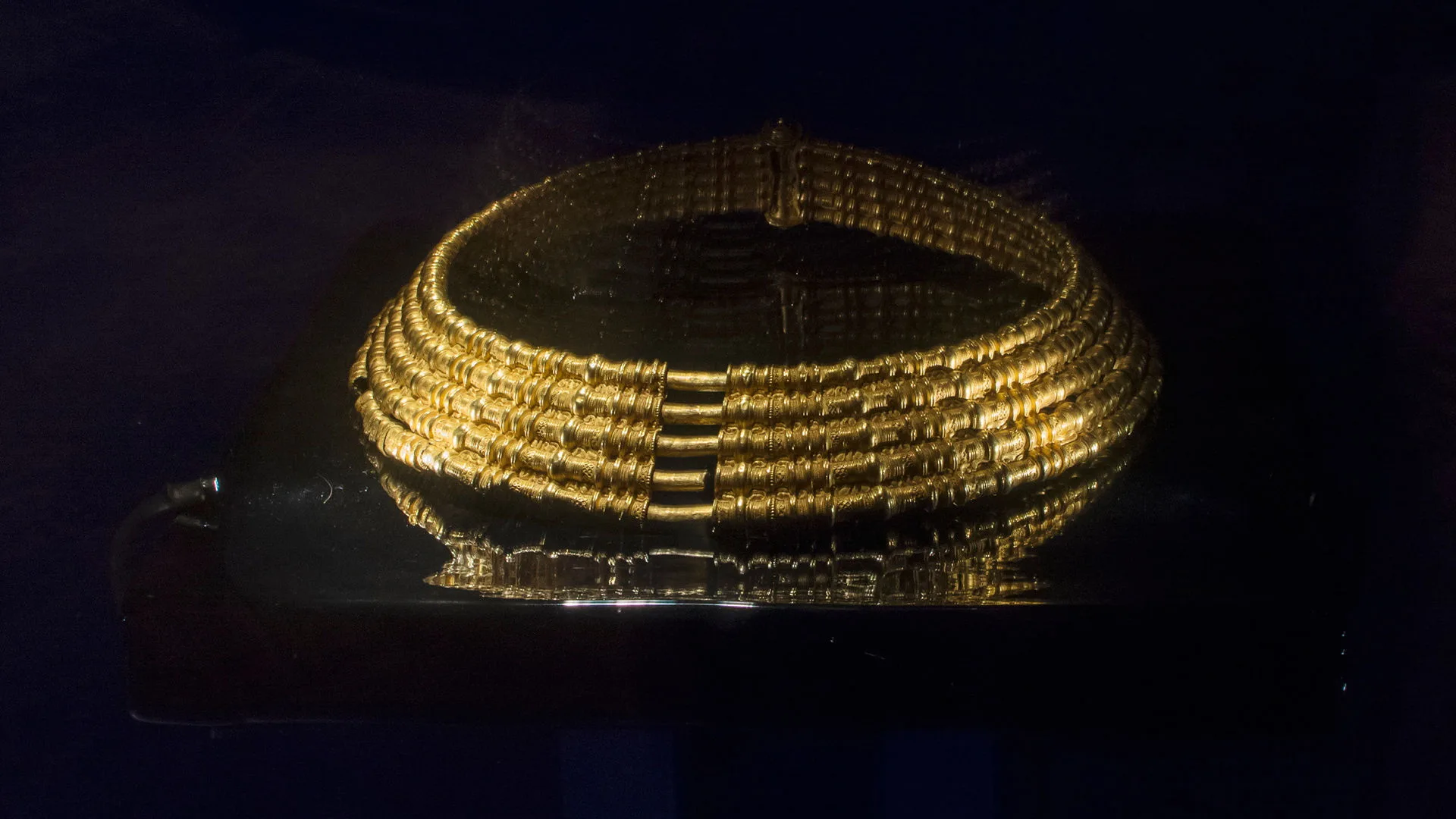Imperial splendour in 4th-century Uppland
Bronze Age
1700 BC – 500 BC
Iron Age
500 BC – AD 1100
Viking Age
AD 800 – AD 1100
The imperial family wore garments adorned with gemstones to signify their rank. And, naturally, their robes were dyed with the most precious colour available in the ancient world: purple. Many Roman emperors were protected by bodyguards recruited from regions north of the empire. These guards were dressed and equipped in ways befitting their special role. Their weapons, helmets, and other gear were often decorated with glass inlays designed to imitate gemstones, all adding to the grandeur that surrounded the emperor.
A belt from Uppland
Some finds from Scandinavia also reflect this imperial luxury and the connections that existed with the Roman court. This can be seen, for instance, in a very exclusive group of belts, of which only a handful of examples are known from all of Scandinavia.

The Tibble buckle
From Litslena parish in Uppland, Sweden.
One such belt, or rather the remains of it, was discovered in 1873 during the digging of a potato pit in Tibble, in the parish of Litslena, Uppland. There, workers accidentally uncovered a previously unknown grave dating to the 4th century AD. Unfortunately, the belt fittings were almost entirely destroyed during excavation, and all that remains today are the fragmented and sorrowful traces of a belt with virtually no parallel in Scandinavia.
Gilding, glass, and silver foil
The Tibble belt was originally made of leather, now only preserved in traces on some of the fittings, and featured a large buckle or clasp. This buckle was cast in bronze and decorated with thin gilded silver sheets and coloured glass meant to imitate gemstones.

The Tibble belt
The leather is a reconstruction showing how the elements would have been placed.
The belt included a series of additional fittings in various shapes. Perhaps the most striking are the elongated, oval fittings adorned with pressed and gilded foil. These too are inlaid with coloured glass, and their edges are framed with profiled silver mouldings.
Other components included articulated fittings for flexibility, as well as smaller rectangular and oval mounts. All share the same type of decoration: gilded sheet metal and glass insets, mimicking the look of Roman precious-metal craftsmanship.

Sword fragments
A Nordic chieftain
Here sits a chieftain or king – for the owner of the belt must surely have been one – in distant Uppland. We can only speculate as to how he came to know about the fashions of the Roman court. From much later times, during the Viking Age and the early Middle Ages, we know that members of the Scandinavian elite travelled to Constantinople and entered the service of the Byzantine emperor’s bodyguard. Perhaps the chieftain of Tibble was a forerunner of these Varangians?
The belt was not made on Roman soil but in Scandinavia. It is possible that its owner had it made as an imitation of a belt he had worn himself, or seen others wear. In this way, he could signal to those around him that he was not only a powerful man, but also one familiar with the fashions of the most significant court of the time – that of the Roman emperor. And that he, too, could make use of the same symbols of power as the emperor himself: gemstones and imitations thereof.






